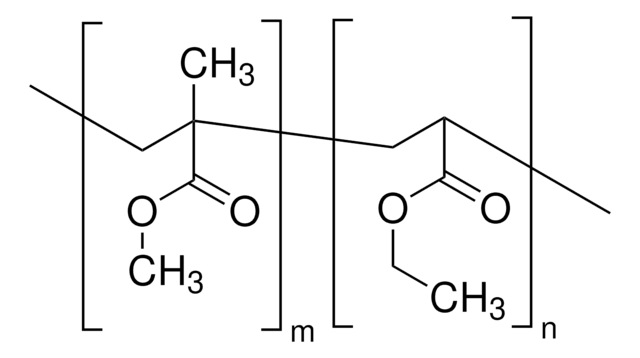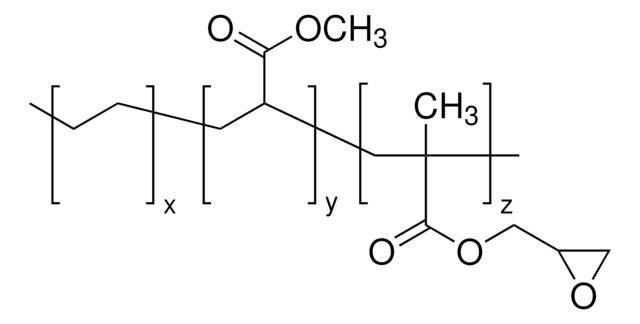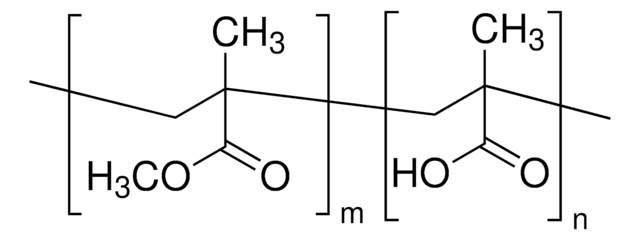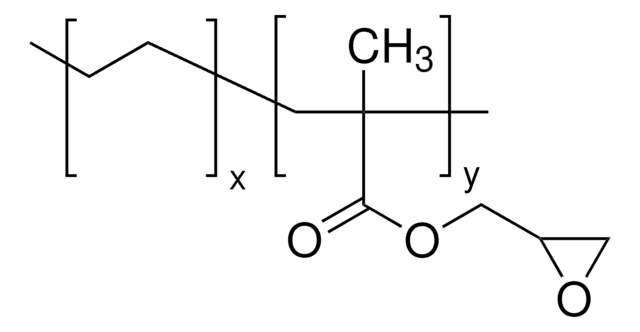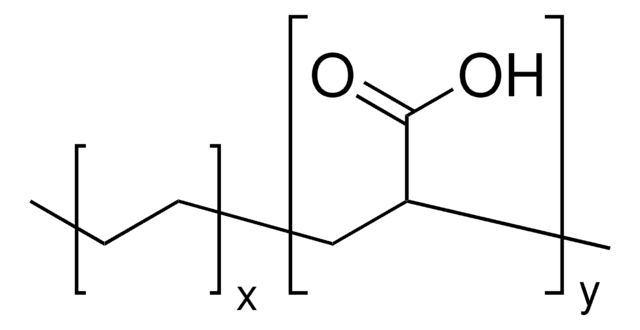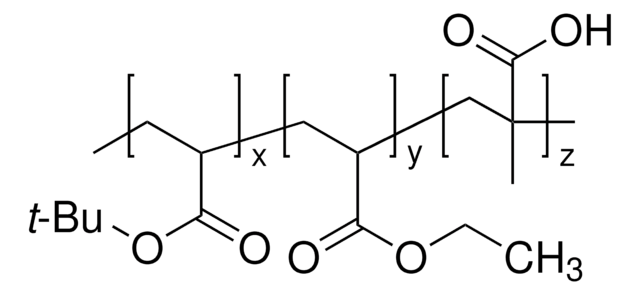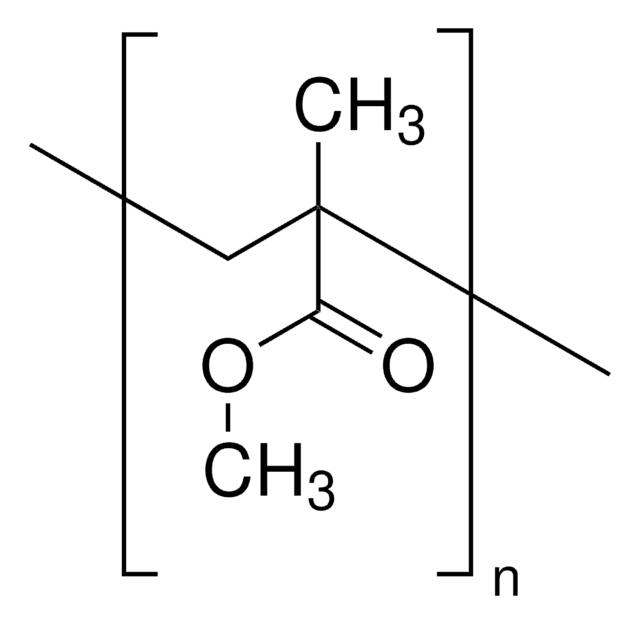463183
Poly(methyl methacrylate-co-ethylene glycol dimethacrylate)
50 μm particle size
About This Item
Recommended Products
form
particles (spherical)
Quality Level
crosslinking
5 % cross-linked
particle size
50 μm
density
1.19 g/mL at 25 °C (lit.)
SMILES string
COC(=O)C(C)=C.CC(=C)C(=O)OCCOC(=O)C(C)=C
InChI
1S/C10H14O4.C5H8O2/c1-7(2)9(11)13-5-6-14-10(12)8(3)4;1-4(2)5(6)7-3/h1,3,5-6H2,2,4H3;1H2,2-3H3
InChI key
XBDAKYZJVVYINU-UHFFFAOYSA-N
Looking for similar products? Visit Product Comparison Guide
Related Categories
General description
Application
wgk_germany
WGK 3
flash_point_f
Not applicable
flash_point_c
Not applicable
ppe
Eyeshields, Gloves, type N95 (US)
Certificates of Analysis (COA)
Search for Certificates of Analysis (COA) by entering the products Lot/Batch Number. Lot and Batch Numbers can be found on a product’s label following the words ‘Lot’ or ‘Batch’.
Already Own This Product?
Find documentation for the products that you have recently purchased in the Document Library.
Articles
Self-assembled monolayers (SAMs) have attracted enormous interest for a wide variety of applications in micro- and nano-technology. In this article, we compare the benefits of three different classes of SAM systems (alkylthiolates on gold.
Our team of scientists has experience in all areas of research including Life Science, Material Science, Chemical Synthesis, Chromatography, Analytical and many others.
Contact Technical Service